
Le Ventoux, lui, a la plénitude du mont, c’est un dieu du Mal, auquel il faut sacrifier. Véritable Moloch,1 despote des cyclistes, il ne pardonne jamais aux faibles, se fait payer un tribut injuste de souffrances.
[The] Ventoux has the plenitude of the mountain, a god of Evil, to which sacrifice must be made. A veritable Moloch, despot of the cyclists, it never forgives the weak and exacts an unjust tribute of sufferings.
Roland Barthes, Mythologies, 1957, translation by Richard Howard2
The Lonely Mountain. The Giant of Provence. Mont Ventoux is perhaps the most revered climb in the world of cycling. There are steeper and longer climbs elsewhere, but none commands the awe that the legendary Ventoux does.
For weeks, I wavered on whether or not to make an attempt up the mountain. I was staying for work in the very north of France, and Ventoux is in the south, in the French Alps. I was somewhat out of shape, having done only one bike ride in the past month.3 I had only ever done one other mountain ascent on a bike. There were plenty of other reasons not to try. But in the end, the mountain won me over. I was a cyclist in France—was there ever any possibility of not making the pilgrimage to Provence?
And so it came to pass that after work on Friday, I boarded a train headed south, ready to tackle the biggest climb that I had ever done.
Est enim praerupta et paene inaccessibilis saxōsae tellūris mōlēs.
The mountain [Ventoux] is a very steep and almost inaccessible mass of stony soil.
Petrarch, Epistolae de Rēbus Familiāribus et Variae, 1336, translation by James Harvey Robinson
Three trains (one of which I nearly missed) and one day later, I arrived on Saturday morning in Carpentras, a charming former Roman town in Provence. There are three main ways to get up Mont Ventoux:
Unfortunately, these three towns are all somewhat remote villages that are not easily accessible without a car. I instead chose to go to Carpentras, which is connected by regional train to Avignon, which is in turn plugged into the main train network throughout France. From Carpentras, I would ride to Bédoin and begin the climb. I think this actually worked out in my favor, since it gave me the opportunity to get warmed up before tackling the mountain itself.
Right away things began to go wrong. (Would it really be a travel adventure with Eric if everything went right?) When I went to the hotel to drop off my bags, I found that the bartender5 only spoke French and Spanish. I only speak English and Chinese. Fortunately, we live in the age of Google Translate, so this wasn’t a huge hurdle, but it was a fun experience.
The next issue: my bike rental delivery was late. Ordinarily, this would be fine, but there was supposed to be a thunderstorm that afternoon, and I wanted to finish my ride before it struck. I called them; it turned out that they had mixed up the dates. (Funnily enough, the man running the rental shop was a German; he said that he usually got complaints for being too prompt, rather than too late.) Luckily, their main warehouse was nearby, so everything was sorted out within an hour. I was cutting it pretty close, but it looked like I would be able to make it before the rain started. With some trepidation, I headed out.
No, it’s impossible.
Eddy Merckx, 1970 Tour de France, after winning the stage on Mont Ventoux and requiring extra oxygen
Starting from a square in the middle of the old town of Carpentras, I followed the signs toward Bédoin. I passed by a pretty aqueduct, although I was disappointed to later learn that it was not of Roman make, dating instead to 1720.

The road to Bédoin was not particularly eventful. There were a few vineyards, but by far the dominant feature in the landscape was the mountain itself. Part of the reason that Mont Ventoux looms so large in the imagination is the way it imposes itself on the entirety of Provence. Unlike the other tall mountains of the French Alps, the Ventoux is somewhat isolated; they call it the lonely mountain because there are no similarly tall mountains nearby. As a result, its presence is unavoidable wherever you are.

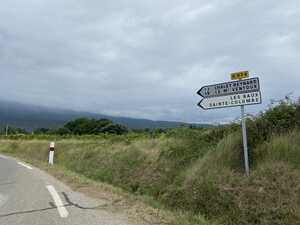
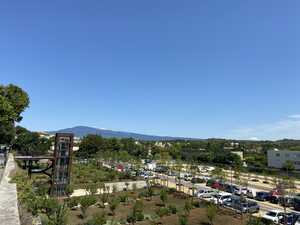
The road was not too bad—there was some decent motor traffic, but it never felt too sketchy. I suppose the drivers around here must be used to cyclists, given the enduring popularity of the Ventoux in cycling lore. After a little more than half an hour of largely flat riding, I found myself in the sleepy village of Bédoin at the base of the mountain. The village itself was pleasant enough, if a little dreary-looking in the cloudy weather. I passed by a number of cafés and bike shops nestled under the shade of trees before turning onto the road where the climb would begin.
I’m going to run a bit.
Chris Froome, 2016 Tour de France, recounting the crash that forced him to run up part of the mountain6
The climb up the Ventoux starts off deceptively easily. I did not know this at the time, but the initial few kilometers average only four percent in gradient. The easiness of the initial part of the climb ironically left me uneasy; suspecting a trick, I made sure to pace myself so that I wouldn’t waste all my energy on the lower slopes. This turned out to be a good decision, because the real gradients were yet to come.
Despite the weather, there were plenty of other cyclists on the mountain that day. Most of them were on the way down, the whine of their free hubs announcing their presence; they had probably gone up in the early morning in order to make sure that they would finish before the storm hit in the afternoon. This had also been my plan, but the delay in the rental bicycle delivery had scuppered that idea.
There was also a decent number of cyclists heading up at the same time. Many were in groups, although a few were riding alone like I was. I am somewhat proud to report that I passed most of them—I often gave a friendly bonjour! when passing, although understandably most people weren’t in the mood to talk. There was still much work to be done before any of us would reach the summit.
Naturally, I wasn’t the fastest cyclist going up the mountain. On the lower slopes, where one could still see the vineyards below, a man on a mountain bike (!) passed me. Later, as we got into the steeper ramps nestled within the treeline, another cyclist—this one on a road bike but with a back-mounted hydration pack, which is considered slightly sacrilegious—got out of a car and started the climb; he was going quite fast. Road cycling is a sport with a lot of tradition and a very particular sense of aesthetics, but it just goes to show that you don’t need to concern yourself with tradition to be fast.7 I think I later caught up to them, and we rode together for a bit, although the group eventually came apart again.
All this time, the climb did not feel terribly difficult, but I wasn’t sure how much farther I had to go before reaching the summit, so I was careful in limiting my effort. Perhaps a bike computer would have been nice in this regard; I typically ride au naturel, preferring to measure things by the feeling in my legs than by the numbers on a bike computer. (Also, those things are expensive!) I could have pulled out my phone to check, but I was trying to keep stops to an absolute minimum. A good guideline for cycling is to keep stops as short and few as you can.
By the same token, I decided not to take any pictures on the way up the climb. I was here to immerse myself in the climb; there would be plenty of time for pictures at the summit and on the way down. I suppose this is somewhat unfortunate for any readers of this blog, but then again, who actually reads my blog?
I don’t know if there was anything particularly special about the ascent; anyone who has done a mountain ascent on a bicycle will probably understand the experience. Eventually, the trees began thinning out, and the road became more tortuous in its route. These were all signs that we were getting closer to the top. I caught up to another cyclist; I meant to pass her, but it turned out that the speed differential was not really big enough to pass cleanly, so we stuck together for a bit before I accelerated into a turn. A little while later, a man in a Bora–Hansgrohe kit seemingly zoomed past me up the mountain. I couldn’t tell if he was actually a professional or not—in the United States, someone wearing a professional team kit is almost certainly not actually a professional cyclist, but in Europe, you can never be too sure.
At this point, I had reached Chalet Reynard, a well-known restaurant at a fork in the road. Beyond the chalet lies the famous rocky landscape at the top of the mountain. In the winter, it’s part of a ski resort, but in the summer, it’s host to a flock of cyclists climbing the Ventoux. Here, I needed to stop for a moment to consult the map; I did not want to go the wrong way at the crossroads. This proved to be a good idea, since the direction that I had originally thought to go was actually the wrong one.
On, on, on.
Tom Simpson, 1967 Tour de France, shortly before dying two kilometers from the summit
One of the most infamous episodes in the history of the Tour de France occurred in 1967, when British cyclist Tom Simpson collapsed on the final stretch before the summit. He did not end up surviving. This was not some ill-fated amateur; Simpson was a former world champion, three-time Monument winner, and Olympic gold medalist. To this day there is a memorial in that spot. It is a humbling sight to pass, knowing that this mountain has claimed the lives of cyclists far greater than I am.
The final kilometers of the ascent are, on paper, not insanely difficult. But then the mountain plays its final trick: the mighty gales that guard its summit. Climbing is hard. Headwinds are hard. Climbing into a headwind is doubly hard. I’m told that Mont Ventoux translates to “the windy mountain”; it is an appropriate name.8 It’s also nicknamed the bald mountain, since the exposed rock at the top leaves no shelter against the howling wind. As a fairly lightweight rider on a lightweight carbon bike, there were times when I was actually afraid that I would be blown over. When I went to take a bike picture at the summit, I didn’t dare to put my (empty) water bottle down, in case it was blown away down the mountainside, never to be seen again.
Being a cold and windy day, I had to stop to put on my jacket. I was feeling miserable at this point; I wolfed down a couple of the small French granola bars that I had picked up at a Carrefour in preparation for the ride. I also ate the last Clif bar that I had brought from America. This made me feel a little bit better, but I still made a grave mistake: reasoning that it could not be much longer to the summit, I began to go faster, eager to set as fast a time as I could up the mountain. I did not realize that the rocky segment from Chalet Reynard to the summit was actually six kilometers in length! Already somewhat fatigued from the many miles9 of riding up the mountain, this surge in effort was almost too much for me, and I began to rapidly slow, weaving across the road. Without any pretty vistas with which to distract myself, the going was painful indeed. There were fewer cyclists here; perhaps some of the others had been deterred by the strong winds that day. I took little heed of the others at this point, too engrossed in my own slow progress. I think I ended up playing leapfrog with this one other cyclist—I would pass him, then he would pass me, then I would pass again, and so on.
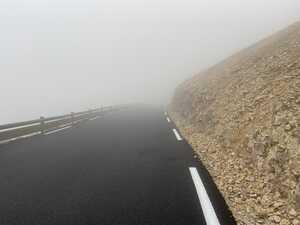
All of the iconic pictures of the final kilometers are taken during clear summer days, when you can see the famous tower at the top of the mountain. Unfortunately, the day I chose was very cloudy, and the summit was shrouded in a layer of thick fog. At the top of the mountain, visibility was poor—fifty meters at most—which made the climb somewhat maddening. Without being able to see very far, there was no way of telling whether the summit was five kilometers away or just around the next corner. For that matter, there was no way of telling where the next corner was. And so I just had to suffer on toward an uncertain goal, dying a little bit with each pedal stroke while not knowing when my torment would be complete. But then again, that’s the joy of cycling, right?
Magnificent desolation.10
Buzz Aldrin, 1969, describing the surface of the moon
The summit of Ventoux is often described as a “lunar landscape,” barren and covered in pale, loose rocks. The fog meant that I could not see much of this landscape, but somehow it also added to the mystical, otherworldly sense. This was a place where grand tours had been won and lost, where people had triumphed, been broken, and breathed their last. If I could see clearly, perhaps the summit would have lost part of its mythical quality. Buzz Aldrin’s famous description of the surface of the moon came to mind.
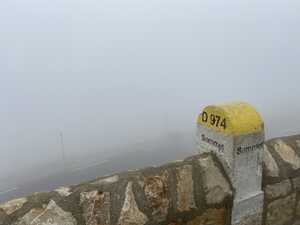
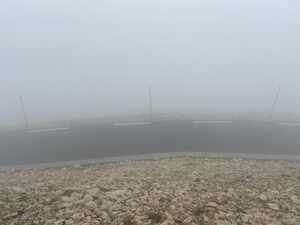
In the midst of all the fog, I nearly missed the iconic signpost indicating the top of the mountain, but I fortunately decided to check out the area around the summit more closely. A kind couple, also cyclists, offered to take a picture of me under the sign, and in turn I took a picture of them.
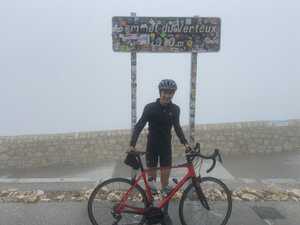
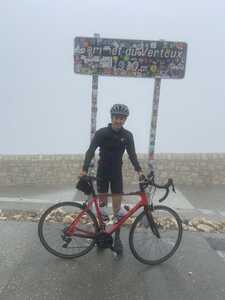
Of course, I also stopped to take a bike picture at the top. Even though it was a rental bike and not my own, I still took care to present the bike well for a nice picture.
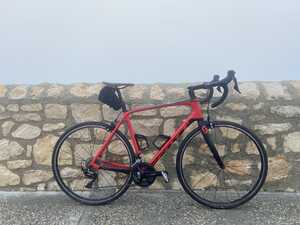
Having conquered the mountain, I would have liked to spend some time soaking in the view at the top. But since it was quite foggy and I wanted to beat the impending thunderstorm, I soon proceeded to the next step of the trip: the descent.
Argh!
Eric Zheng, 2021, after crashing on the descent down Mont Ventoux
I actually made decent time up the mountain: it took me 2:05 to do the climb from Bédoin. Apparently it should take 1:30–2:30 for a trained amateur, so I was well within that range. (For reference, the fastest time ever recorded was 55 minutes, and most professional riders will take at least an hour.) After my photo op at the top, it was time to head down the mountain.
I was at first unsure of which way to go down the mountain. The southern approach (from which I had come) was closest to Carpentras, where I needed to return before the thunderstorm hit. But a loop is always more fun to ride than an out-and-back trip, so I settled on taking the northern route down the mountain to Malaucène and then riding back to Carpentras, betting that I would be able to beat the weather.
The descent started out pretty nicely. The thrill of a miles-long descent is always made sweeter by the knowledge that you’ve earned it by the long, hard climb. Once I broke free of the strong winds and fog at the summit, I was descending on well-maintained roads through the pretty French Alps. Truly, this was one of life’s simple pleasures.
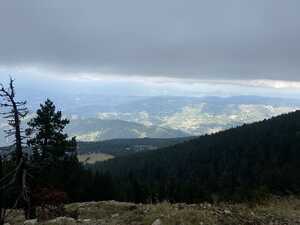
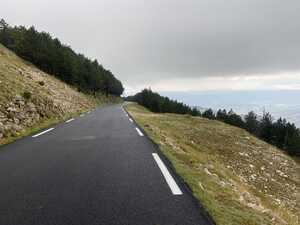
If the ride had continued on like this, it would probably have entered the record as a perfect, storybook ride. But alas, there was still one incident to come: a crash! You see, being a somewhat brash twenty year-old, I decided to try to push myself to see how fast I could go. A few problems with this:
You can pretty much imagine what happened next…I lost control of the bike, hitting the tarmac at an uncomfortably fast speed12 and taking a short tumble down the side of the mountain. Embarrassingly, I hadn’t even beaten my previous record for speed when I crashed. This cemented my status as a decent climber but a terrible descender.
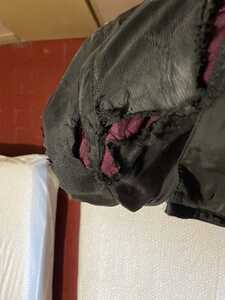
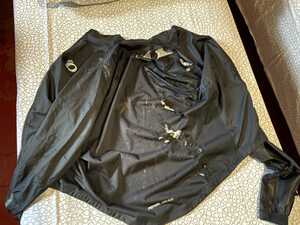

A pair of Dutch cyclists happened to be on the way up and saw my crash; they stopped and asked if I was okay. They said that there was a restaurant a little bit further down the mountain, where I could rest for a bit and recuperate. After checking my bike for mechanical problems, I thanked them and got back on, proceeding down the mountain.

I was actually fairly lucky with the crash. Although there was some pretty nasty road rash on the right side of my body, all of my valuables—my watch and my phone—were fine. (My phone case was a bit scratched-up, though.) My helmet had done its job, absorbing the impact to my head. The bicycle itself was unharmed except for some cosmetic scratching on the plastic part of the break levers. This last part was particularly important, both because it was a rental bike and because I still had about twenty miles to go before I would reach the hotel.

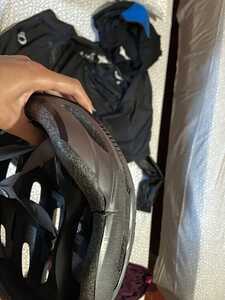
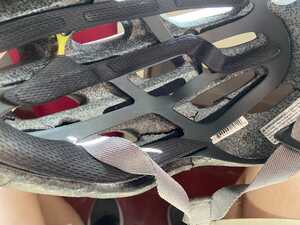
I took the rest of the descent easy and arrived in Malaucène alright. From there, I had to get back to Carpentras. I was not sure if I’d make it before the storm, and I briefly considered getting an Uber. My wounds stung a bit as well. But in the end, I pressed on and managed to make it back in time.

When I got back to my hotel room, I cleaned my wounds as best as I could. I had luckily decided to bring some Neosporin with me from home, so after purchasing some gauze and surgical tape from a local pharmacy, I was able to dress my wounds. Taking inventory of my belongings, it was a bit of an expensive crash; I estimated that I had ruined about two hundred dollars’ worth of cycling equipment, not to mention the fifty-Euro note in my pocket that had been shredded. The crash also ruined my plans for the rest of the weekend: my plan was to spend the next day riding out east to Sault to see the famous lavender fields, but given my wounded state and lack of a usable helmet,13 this was a no-go. I was effectively stuck in Carpentras until my train arrived tomorrow night; even if I had been able to find an earlier train back home, I had requested that the rental company pick up the bike tomorrow evening anyway.
I decided to go out to have a nice dinner, partially to reward myself for conquering the Ventoux and partially to cheer myself up after the crash. I had my most complex interaction with someone in French: I ordered a thé gourmand for dessert, and the waitress asked if I wanted noir ou vert. (I chose vert.) I also treated myself to some candied fruit pastries, which were pretty good.


It was slight torture seeing this beautiful bike in my hotel room but not being able to ride it. I instead spent the next day just walking around the town; the weather was quite nice, so there’s that. There’s not too much to do in Carpentras, but it’s a decently cute old Roman town in the south of France; there are plenty of worse places to be stuck for a day.
Ferdi, il est trop vieux. Il a mal. Ferdi s’est tué! Ferdi s’est tué dans le Ventoux!
Ferdi is too old. He is in pain. Ferdi killed himself! Ferdi killed himself on the Ventoux!
Ferdi Kübler, 1955 Tour de France, abandoning the race after cracking on the Ventoux
Well, this isn’t really part of the bike ride proper, but I have some bad vacation pictures that I wanted to share, so I’ll subject you, poor reader, to them. Also, I have more fun quotes related to Mont Ventoux, so I need more sections in which to use them as epigraphs.


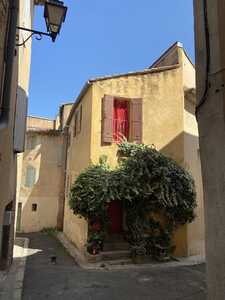
I had a fancy lunch at a nice rooftop bistrot. The atmosphere was nice, but I didn’t take a picture of the place because there were other diners present. However, the portion size was rather small, so I ended up getting crêpes afterward as well.


I later went back to my hotel room and journaled a bit. My room had an excellent view of the old town square.
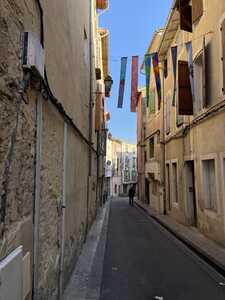

The bike rental person was not late for picking up the bike. They were quite a reasonable company; since the only damage to the bike was some scratching on the plastic, they just replaced it without charging me. I’m not paid to promote them or anything, but they’re Bcyclet, in case anyone is in the region and looking for a bicycle rental.14
For dinner, I just had some fast food on a park bench. Unfortunately, this bench was next to some vegetation, and by the time I had finished my meal, I had received at least three mosquito bites. Maybe it’s just me, but it seems like the mosquitoes in France are particularly vicious.
Full many a glorious morning have I seen / Flatter the mountain tops with sovereign eye
Shakespeare, Sonnet 33, 1609
I took a late train that night to Avignon and spent the night at a budget hotel about a mile away from the train station. In the meantime, the gauze had become quite stuck to the large scrape on my hip. It took several hours, lots of water, and a couple of tears to get it off.
On Monday morning, I took an early train back to Lille. As we rolled out of the station at Avignon, the sun was rising to the east, just over the peak of Mont Ventoux. It was a beautiful sight, and I wondered what the sunrise would look like from the mountaintop itself. Doubtless there were other cyclists at the top of the mountain at that very moment, seeing it for themselves. As for me, I could only watch from afar, thinking that perhaps one day I would return to see it. In the meantime, the mountain remains resolute, a witness to the triumphs and failures—even deaths—of many generations of cyclists before, and many more to come.
Moloch was an ancient Canaanite god mentioned in the Bible and associated with child sacrifice.↩︎
Sorry, every single article or blog post about Mont Ventoux must include an obligatory dramatic Barthes quote. I thought I’d get it out of the way.↩︎
Well, out of shape from a cycling standpoint. From a running standpoint, I ran my first half-marathon! At 1:49, I was comfortably within my goal of two hours. No, despite what it looks like, I swear I’m not a triathlete.↩︎
I’m joking, of course. I have nothing but respect for anyone who manages to get to the top of the mountain, regardless of the route taken.↩︎
This was a small local hotel that doubled as a restaurant.↩︎
In case you aren’t plugged in to the online cycling community, this moment later became a bit of a meme.↩︎
Personally, I would consider myself a more traditional road cyclist, but I do flagrantly violate one key rule of the sport: I keep my legs unshaved.↩︎
Apparently, there have been reports of cars being blown off the road by the wind. Winds in excess of three hundred kilometers an hour have been reported!↩︎
Yes, I just switched between metric and customary units of measurement.↩︎
Apparently, the Apollo 11 transcripts have this recorded as “magnificent definition,” which doesn’t really make sense.↩︎
I don’t know how significant this is, but I was also using rim breaks rather than disc brakes, which purportedly perform better in wet conditions.↩︎
I think I maxed out at around forty miles per hour on the descent, but I was going slower than that when I crashed.↩︎
As a general safety tip to those reading this blog post who aren’t regular cyclists, helmets are only designed to withstand a single impact, and they should be replaced immediately once they sustain one.↩︎
I don’t know why, but I’m always a little afraid that business that I find through the Internet—both bike rentals and hotels—are scams, i.e. they don’t actually exist and just collect your money. This has never happened to me, though; it invariably turns out to just be a small operation run by a cheerful European.↩︎
Comments